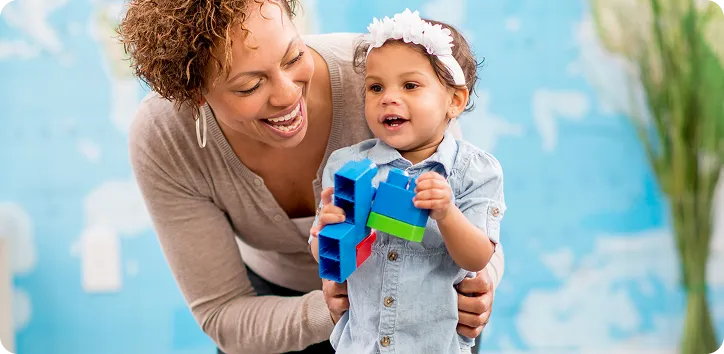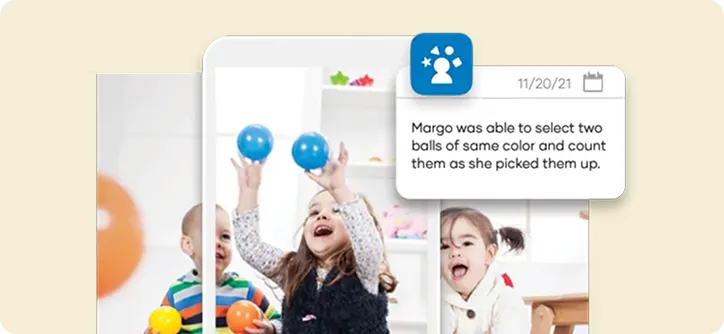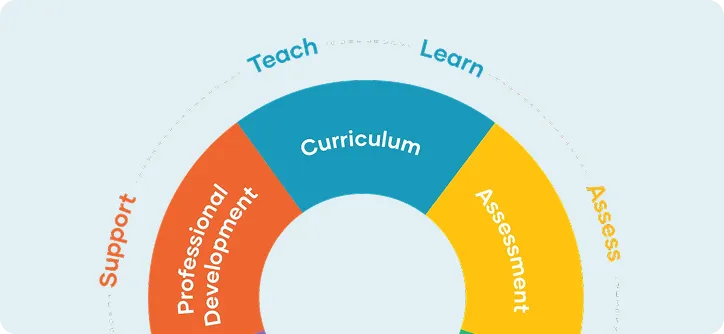Program Culture in Private Child Care: The Foundation of Quality, Retention, and Family Trust


Program culture in child care is the shared beliefs, routines, and tools that guide daily practice: it shapes how teams plan instruction, coach, recognize growth, and communicate with families. When culture is consistent (clear expectations, coaching cadence, curriculum fidelity), teacher retention rises, and quality is sustained across classrooms.
What Program Culture Means in Child Care (and Why It Defines Quality)
In today’s early childhood landscape, leaders are balancing multiple priorities: maintaining a high-quality program, growing enrollment, keeping teachers engaged, and meeting families’ high expectations. While many factors influence success, one element quietly shapes all of them: program culture.
Program culture in child care is what teachers, leaders, and families experience every day. It’s how expectations are communicated, how teams collaborate, and how consistency is maintained across classrooms. A strong culture ensures that quality is not just written in your handbook but reflected in every interaction.
Notably, culture directly influences child care teacher retention. When teachers feel supported, trusted, and aligned with a program’s mission, they are far more likely to stay and grow within it.
Invest in People: Professional Development, Coaching, and Recognition That Reduce Turnover
Teachers are the heart of every child care program. They bring curriculum to life, nurture children’s growth, and build relationships with families. To reduce staff turnover and strengthen quality, childcare leaders must build systems that support, empower, and celebrate their teams.
Professional development (PD) in child care should be consistent, connected to daily practice, and rooted in collaboration. Coaching and PD cycles that focus on reflection, not evaluation, build teacher confidence and belonging. Recognition also matters. When leaders acknowledge progress tied to child outcomes or family feedback, teachers see the impact of their work and feel valued.
A 30-60-90 plan for improving teacher support can help.
- 30 days: Set shared expectations for teaching, communication, and classroom routines.
- 60 days: Launch collaborative coaching cycles and celebrate early wins.
- 90 days: Gather staff feedback, refine processes, and recognize collective achievements.
By investing intentionally in people, programs create environments where teachers want to stay and thrive.
Tools That Make Culture Tangible: Curriculum, Assessment, and Routines
Providing teachers with the right tools and structure communicates that you value them and the children in their care. These investments contribute to a strong, trusting culture where teachers feel confident and supported.
Curriculum fidelity—the consistent use of research-based curriculum across classrooms—is a hallmark of that trust and consistency. When everyone knows what to expect, a sense of stability and shared purpose takes root. At the same time, individualization within that structure allows teachers to build deeper relationships with children and families, strengthening both engagement and quality.
A recent multi-district, independent randomized controlled trial found higher teacher retention rates in programs that used The Creative Curriculum together with GOLD and PD, both in person and online. This “ecosystem effect”—the combination of curriculum, assessment, and PD—supported programs in creating stronger, more consistent cultures.
Families Notice Strong Culture: Stability Builds Trust and Enrollment
Families can feel a strong program culture the moment they walk through the door. They see it in the way teachers greet children, how classrooms are organized, and how communication feels open and consistent.
When teachers stay year after year, families notice, and that stability builds trust. A strong culture creates continuity for children, reassurance for families, and confidence that the program is well-managed and committed to excellence. Families who experience that sense of trust and belonging are also more likely to share their positive experiences with others, helping to strengthen your reputation and grow enrollment.
Building a Lasting Culture of Quality and Retention
A strong program culture is one of the most valuable investments a child care leader can make. It connects teachers to purpose, supports consistent instruction, and builds confidence with families.
When culture, tools, and professional growth are aligned, quality becomes sustainable, and retention and enrollment growth follow.
Our connected solutions support a stronger program culture.
Frequently Asked Questions: Program Culture & Teacher Retention in Child Care
Program culture sets the tone for every experience teachers have. When leaders invest in coaching, PD, and clear expectations, teachers feel supported and stay longer, creating the stability of a school community that families value.
Professional development in child care reinforces shared teaching practices and helps teachers connect their work to larger goals, building both confidence and consistency.
When all classrooms follow the same research-based curriculum and use aligned assessment tools, teachers feel unified in their work, families see consistency, and children benefit from predictable, high-quality learning experiences.
Look at key indicators: teacher retention, staff satisfaction, family feedback, and consistent implementation of curriculum and assessment across classrooms. These signals show whether culture is thriving.
Start small: your shared vision for quality, establish routines for collaboration, and celebrate successes often. Over time, these actions build a culture where quality and retention reinforce each other.





